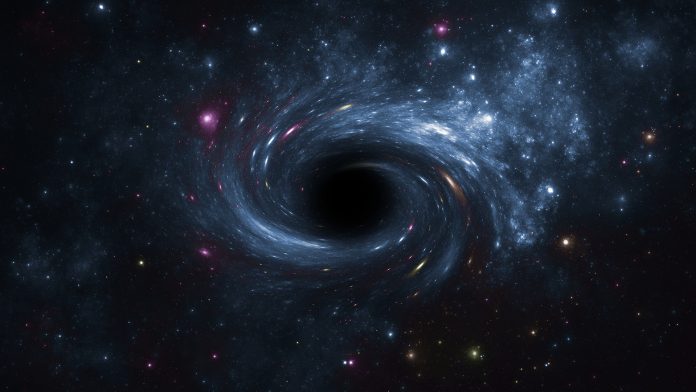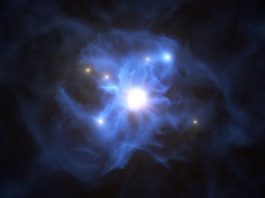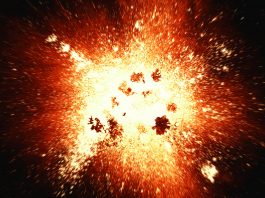Astronomers have determined a new way of identifying active black holes and measuring how much matter they are drawing in.
This innovative technique for detecting active black holes can be applied to millions of galaxies, searching for bright, supermassive black holes at the centre of the galaxies.
Scouring the largest galaxies
Lead author Jessica Thorne, a PhD student at the University of Western Australia section of the International Centre for Radio Astronomy Research, explained that active black holes are generally observed in the largest galaxies in the Universe.
“The black holes we’re looking for are between a million and a billion times more massive than our Sun.
“As they suck in matter from around them, the matter gets super-heated because of friction and becomes very, very luminous.
“And when they’re active, these black holes can outshine the rest of the galaxy,” she said.
Overcoming challenges
Before the development of this method, detecting bright black holes presented difficulties, with astronomers searching for them with complicated techniques unique to different types of telescopes.
This new method works on typical telescope observations that already exist for millions of galaxies, making the process of discovering active black holes more straightforward.
“We can identify these active black holes and look at how much light they’re emitting, but also measure the properties of the galaxy it is in at the same time,” Thorne explained.
“By doing both at once, we can have a better idea of exactly how the black hole is impacting its host galaxy.”
New technique offers promise
The team established the technique by utilising an algorithm called ProSpect to model emission from galaxies and black holes at different wavelengths of light.
Following this, they used the technique on almost half a million galaxies from Anglo-Australian Telescope’s DEVILS survey.
As well as this, they put it to use on over 200,000 galaxies from the GAMA survey, which brings together observations from six of the world’s best ground and space-based telescopes.
“One of the reasons we’ve ignored them in the past is because it’s hard to find them all,” she commented.
“We don’t really understand these bright black holes to incorporate them into our modelling with sufficient detail.”
Finding active black holes across the Universe
Dr Bellstedt said the new technique is easier, more consistent, and more thorough.
“It suddenly means we can look for active black holes in so many more places than we were able to before,” she said.
“It’s going to help us search more galaxies and look further back in time to the distant Universe.”
Supermassive black holes are thought to have a huge impact on how galaxies evolve.
“We think that an active black hole in a galaxy is able to decrease the amount of star formation really quickly and stop the galaxy from growing any further,” Thorne added.
“It can effectively kill it.”
With observations from new telescopes such as the James Webb Space Telescope, the Vera C. Rubin Observatory in Chile, and the Square Kilometre Array in Australia and South Africa, it could be possible for astronomers to apply this method to millions of galaxies at once.
“It’s exciting to think about how many doors this has unlocked for the future,” Thorne concluded.









